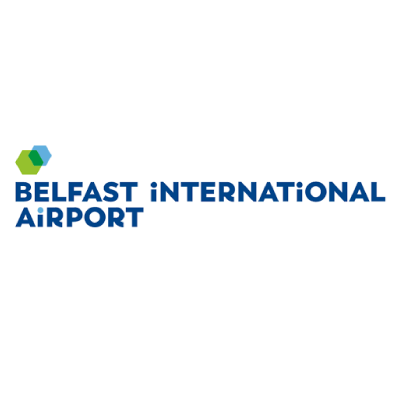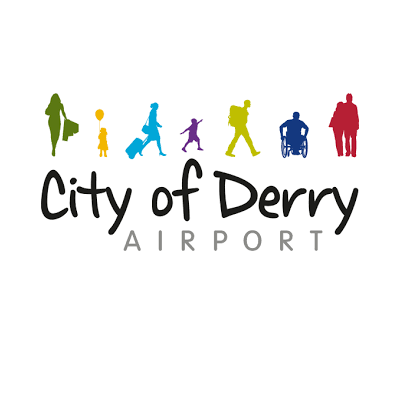Passenger behaviour analysis and how airports are pivoting to accommodate tech-savvy travellers
There’s no denying that technological advancements have positively disrupted how we travel forever. Whereas in the past, people would head to their local travel agent to book a holiday, now all they need to do is pull out their smartphone from their pocket to begin planning, searching and booking their perfect trip.
Innovation in travel tech and tourism has created a new generation of tech-savvy travellers who demand a smart and seamless experience at every point of the process, from searching and booking flights to journeying through the airport, boarding the plane and returning home. With more choice than ever before, passengers have the power. So it is up to airports to ensure they’re accommodating tech-savvy travellers and transforming them into valuable loyal customers.
Here we will look at how airports can use passenger behaviour analysis to support them in innovating and delivering the dynamic, on-demand, fast-paced experience passengers desire.
Passenger Behaviour Analysis: why, how and how much?
In the past, airports have perhaps been guilty of thinking of passengers in logistical terms, like they would bags transported from A to B. As highlighted by Martha Todd Edge (Innovation and Experience Director at Charlotte Douglas International Airport) at the International Airport Review Online Summit, “people are coming to the airport for all sorts of reasons – holidays, sad reasons, and we need to look at how we’re making them feel during their travels.”
There’s a real need for airports to adopt a more customer-centric approach that focuses on identifying the individual needs of passengers, their reasons for travelling, and delivering products and services that meet them.
For this to work, airports need to get to know the people passing through their terminals by collecting their data and building passenger profiles for analysis. Airports can achieve this in several ways, such as selling flights and hotels directly to passengers, generating reservations with online parking systems, offering in-terminal WiFi and in-airport purchases like Fast Track bookings and gathering customer feedback. The idea is that all touchpoints are optimised to collect passengers’ marketing permissions and get them linked into your airport’s loyalty loop.
Creating passenger profiles
“It’s important to understand that there is not one customer but several customers, and that’s what we call passenger personas,” said Dimitri Coll, Vice President of Airport Customer Experience Airports Council International (ACI), at the IAR Online Summit. He added, “we have various personas with different needs and expectations, and we also find that one customer’s needs and expectations might change depending on whether they’re travelling with family or for business. If you can understand what the customer really wants, it’s easier to deliver good customer service and experience.”
We agree that getting to know passengers as individuals is vital, particularly in the age of the tech-savvy traveller. Our intuitive Customers modules are designed to help airport partners perform passenger behaviour analysis so they can better understand what’s interesting and important to passengers and how they behave. Using our CRM to unify data and insights from all sales channels and touchpoints helps airports continue talking to passengers about the products, services and routes they’re most interested in.
From improved personalised communications, airports firstly deliver the best possible experience, ensuring passengers become loyal customers and secondly, unlock as much revenue as possible to increase customers’ lifetime value.
Challenges in developing passenger behaviour analysis
Passenger behaviour analysis offers many benefits to both airports, and their passengers and 73% of passengers say they are willing to share data to improve airport processes. However, there is a fine line between what’s considered acceptable (and in the interest of the passenger) and what breaches passenger privacy. We’ve explored this more in our article, ‘Walking the fine line between passenger information and information privacy,’ and touched on how technological advancements like predictive analytics and anonymised ‘big’ data can also be used to identify and meet the needs of tech-savvy travellers.
How the airport environment is now incorporating technology seamlessly
“Customers expect an immersive experience,” said Dimitri Col at the IAR Online Summit, and he’s right. Passengers now expect technology to accompany them throughout their journey, with a report by SITA stating that 68% of all passengers will be digital travellers by 2025. Moreover, passengers want to be in control of their experience at all times, using any device and with just a touch of the button, which is why implementing an omnichannel strategy is critical.
Today we’re seeing airports pivoting away from being a mere gateway to fully-fledged experience creators and facilitators, thanks to ecommerce technology, like the Rezcomm Marketplace, which enables customers to search, plan and book their entire journeys from the airport website. What’s more, with Rezcomm’s handy Customers modules, including ‘Centralised Manage My Booking’, airports can:
- Provide customers with a single location to manage all bookings and reservations
- Enable customers to view what they’ve purchased and, perhaps more importantly, what they haven’t
- Upsell and cross-sell relevant products and services they’re missing
- Manage all customer data and communications
- Automate processes to save time and maximise opportunities to engage with and sell to customers
Putting passengers in control of their experiences and providing personalised communications encourages customers to part with more data, improving passenger behaviour analysis and leading to even better passenger experiences. It’s a full-circle, end-to-end solution.
But this isn’t the only way airports incorporate technology to meet tech-savvy travellers’ needs. While airport ecommerce and CRM solutions offer benefits throughout the passenger lifecycle, seamless technology can also be implemented at the airport to ensure passengers continue to connect with your brand and enjoy frictionless travel. Some examples of this include:
Augmented Reality – Airports are also adopting AR wayfinding technology to help passengers navigate the airport and access essential information in real time. A recent example is Zurich Airport, which has teamed up with Google to create the first AR-enabled airport using Google Indoor Live View. Read more about it in our article, ‘Solving airport digital transformation challenges.’
Contactless Airport Technology – The contactless passenger experience is not a new concept. However, its adoption rapidly accelerated during the pandemic, with the need to minimise the spread of the COVID-19 pandemic. As a result, we’ve seen an increase in all aspects of seamless airport technology from QR code scanning, mobile eticketing, biometrics and self-service check-in and bag drop, enabling passengers to enjoy a safer airport experience and a slicker, stress-free journey.
Airport technology predictions, deployments, upgrades and plans for future services
As we move out of the pandemic, we expect airports to continue investing in technology to ensure a smoother passenger journey. However, as Dimitri Col pointed out at the IAR Online Summit, “we’re talking less about touchless and more about a seamless, intuitive experience. It’s an evolution of expectations from the COVID-19 crisis.”
More biometrics at the airport – In addition, we expect airport environments’ seamless technology to include a broader utilisation of biometric solutions, including facial, fingerprint and iris scans, likely with mobile app integrations once the industry has overcome the challenges of privacy, security issues and standardisation.
The focus has been primarily on using biometric identity for single journeys. However, in the near future, we expect to see a focus on creating digital identities that passengers can use across multiple trips.
Increased travel industry collaboration within the airport – We also expect to see increased collaboration throughout the travel industry, with airports working closely with airlines, border control, other modes of transport and key commercial partners in retail and hospitality to deliver a seamless, unified experience for travellers.
The rise of travel industry collaboration within the airport
While it’s hard to say exactly what technology airports will use in ten-twenty years, we know that innovation will be driven by changes in passenger behaviour and demands. So, if you want to futureproof your airport and retain your loyal customers, performing passenger behaviour analysis is key.
Download our Customers Brochure to learn more about Rezcomm’s powerful centralised customer identity tracking solutions and book a meeting with our team to discover how we can support you in accommodating the tech-savvy traveller.






























